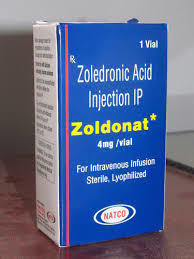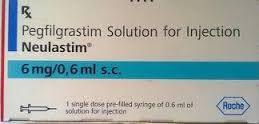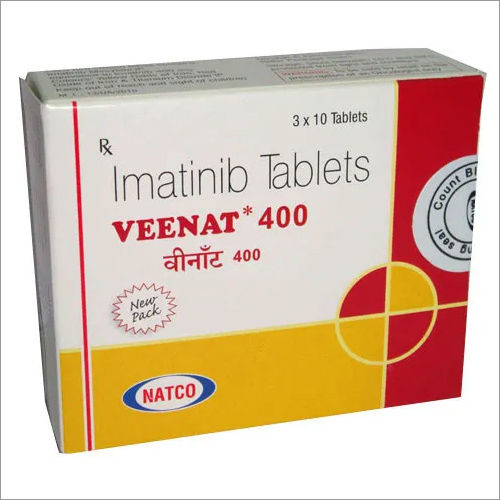
Zoldonat 4 Mg Injections
Product Details:
- Enzyme Types Other
- Feature Other
- Application Other
- Physical Color/Texture Other
- Fermentation Smell Normal Smell
- Storage Instructions cool and dry place
- Shelf Life 146 Hours
- Click to view more
Zoldonat 4 Mg Injections Price And Quantity
- 10-10000 Piece
- 10.00 - 100.00 USD ($)/Piece
- 2290 USD ($)/Piece
Zoldonat 4 Mg Injections Product Specifications
- Normal Smell
- Other
- Other
- 146 Hours
- Other
- cool and dry place
- Other
Zoldonat 4 Mg Injections Trade Information
- Cash Against Delivery (CAD)
- 10000 Piece Per Week
- 7-15 Days
- North America Eastern Europe South America Australia Africa Western Europe Middle East Asia Central America
- All India
Product Description
An injectable drug called Zoldonat 4 mg is used to treat diseases of the bones. Zoledronic acid, a strong bisphosphonate that aids in preventing bone resorption, is present in it. The intravenous injection is frequently prescribed for diseases like osteoporosis, malignant hypercalcemia, and cancer patients' bone metastases. By delaying bone deterioration, lowering the risk of fractures, and minimising bone discomfort, Zoldonat 4 mg works. However, it could also cause adverse effects like bone pain, kidney issues, and flu-like symptoms, thus patients should be properly watched during treatment. While taking this drug, it's crucial to adhere to the doctor's directions and have regular checkups.
The zoledronic acid-containing Zoldonat 4 mg injections provide a number of qualities and advantages for the treatment of bone-related conditions:
Features:
1. Strong Bisphosphonate: Zoledronic acid is a potent bisphosphonate that prevents bone loss and supports bone density maintenance.
2. Intravenous Delivery: Zoldonat 4 mg is delivered intravenously, enabling effective and exact medicine delivery.
Benefits:
1. Treatment for osteoporosis: By halting additional bone loss, Zoldonat 4 mg is useful in treating osteoporosis, a condition marked by decreased bone density and increased fracture risk.
2. Malignancy-related hypercalcemia: The injection is used to manage elevated calcium levels in the blood brought on by cancer and lower the risk of consequences.
3. Management of Bone Metastases: Zoldonat 4 mg is used in the treatment of bone metastases, secondary cancer growth in bones, bone pain, and skeletal-related events.
4. Fracture Risk Reduction: Zoldonat 4 mg reduces the risk of fractures by slowing down bone resorption, especially in people with weak bones.
5. Convenient Dosage: The intravenous injectable administration allows for once-yearly dosage, boosting treatment adherence and lowering the frequency of doctor visits.
It is crucial to remember that while Zoldonat 4 mg injections have many advantages, they may also have possible drawbacks and need for close monitoring and guidance from medical specialists during treatment. Before beginning this drug, patients should consider potential risks and benefits with their healthcare providers.
Zoldonat 4 Mg Injection Uses:
1. Osteoporosis: Postmenopausal women and men with an elevated risk of fracture who have osteoporosis are treated with Zoldonat 4 mg. It aids in increasing bone density and lowering the chance of fractures.
2. Malignancy-related hypercalcemia: The injection is used to treat hypercalcemia (elevated calcium levels) brought on by specific malignancies, helping to reduce blood calcium levels.
3. Zoldonat 4 mg is used to treat bone metastases, which are malignant growths that have spread from other regions of the body to the bones. It lessens the likelihood of skeletal-related occurrences and helps to decrease bone discomfort.
Zoldonat 4 mg Injection Side Effects:
1. Flu-like Symptoms: Following the injection, patients may have flu-like symptoms such as fever, exhaustion, muscle soreness, and headache.
2. Bone Pain: Some people may feel minor to major joint, muscular, or bone pain.
3. Gastrointestinal Disturbances: Although mild and transient, side symptoms such nausea, vomiting, and diarrhoea might happen.
4. Zoldonat 4 mg may impair renal function in some people, which could result in elevated serum creatinine levels. Drinking enough water is crucial to lowering your risk of kidney-related problems.
5. Hypocalcemia: The drug may occasionally induce low amounts of calcium in the blood, resulting in symptoms including tingling, numbness, or cramping.
6. Rarely, there may be severe allergic responses that include a rash, itching, swelling, extreme dizziness, or breathing difficulties.
To reduce the risk of potential adverse effects, individuals must tell their healthcare provider about any pre-existing medical issues and any medications they are taking. When receiving Zoldonat 4 mg injections, patients should be closely watched, and any worrying side effects should be immediately reported to the healthcare provider.

Price:
- 50
- 100
- 200
- 250
- 500
- 1000+

 English
English Spanish
Spanish French
French German
German Italian
Italian Chinese (Simplified)
Chinese (Simplified) Japanese
Japanese Korean
Korean Arabic
Arabic Portuguese
Portuguese




 Call Me Free
Call Me Free
